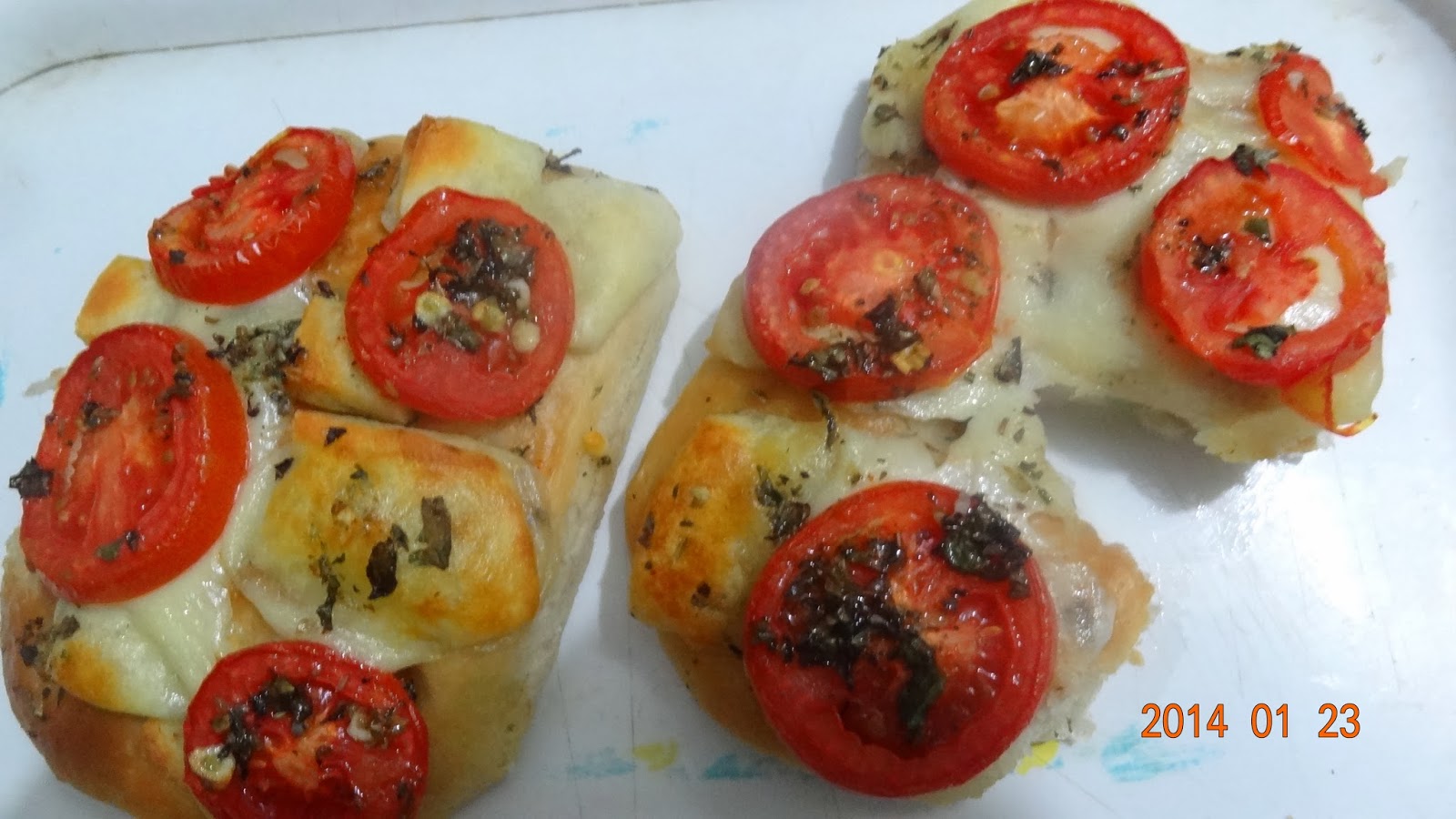(WE KNEAD TO BAKE: Bread #13, adapted from My Diverse Kitchen: Focaccia Caprese )
Bread-baking is one of my favorite things! Since I have started baking bread, in spite of loads of disasters I have got some lovely loafs by following the recipes of some expert bloggers on the Net. Recently, I was fortunate enough to become a part of a wonderful group called: We Knead to Bake. I was delighted! The WKTB group decides to bake one bread per month and this month's choice was Focaccia Caprese. Focaccia is a savoury flatbread that originates from Italy. It looks like pizza but is not exactly pizza.
For this recipe, I needed to use basil leaves. The Tulsi plant is an integral part of every Indian household but I did not have it in my house. My next-door neighbor very kindly let me take some leaves from her potted Tulsi plant.
Once all my ingredients were in place, I was all geared up to bake the focaccia.
I got a detailed recipe from Aparna's blog here. I also referred to the recipe at the Kitchen Whisperer.
Ingredients:
For dough:
Instant yeast - 2 tsp
Sugar - 1 1/2 tbsp.
All purpose flour: 3 1/2 cups
Salt: 1 tsp
Oil (preferably olive oil): 1/4 cup
Warm water: 1 to 1 1/2 cups
A little more olive oil for brushing
dough
For the topping:
Tomatoes, sliced thin: 4-5
Round pieces of mozzarella cheese,
cut into1/4” slices
Fresh basil leaves, cut into thin
strips: 1/2 cup
For the Herbed oil:
Olive oil: 1/4th cup
Dried oregano: 1 tsp
Dried basil: 1 tsp
Red chilli flakes: 1/4 to 1/2 tsp
Finely minced garlic/ garlic paste: 1/2 tsp
Salt to taste
Fresh basil leaves for garnishing
Procedure:
To make herbed oil:
Put all the ingredients in a bowl and
whisk them together. Keep aside till required.
To make the dough:
Put the yeast, sugar flour, salt and oil
in the bowl of the processor and pulse a couple of times to mix well. Then add
1 cup of warm water (and as much more as you need) and knead until you have a
soft elastic dough that is just short of sticky.
Remove the dough from the processor bowl,
shape into a round and place in a well oiled bowl turning the dough around so
it is coated. Cover and let it rise till almost double in volume. This should
take about an hour.
 |
| Dough doubled in an hour |
You can make this as 2 medium sized
Focaccia or 4 smaller ones. For the rectangular Focaccia, take two
rectangular pans of size 11" by 7" and
oil them well. Then divide the dough into two equal portions and lightly roll
them (or press out) out into approximately 11” by 7”. If making 4 Focaccia,
then divide the dough into 4 equal portions. Roll each portion out (or press
out) evenly into approximately 5” by 7”. You need not worry if the shape is not perfect!

Transfer
the dough to the baking tins. The dough will shrink a little. Use your fingers
and push it out a bit making sure it’s evenly thick throughout. Let it rise for
20 minutes. Lightly oil your finger tips and press into the dough creating
evenly spaced “dimples” in it. Generously brush the surface with oil.
Bake at 210C (410F) for about 18 to 20
minutes till it is almost done and is beginning to turn golden brown. Take the
Focaccia out and turn up the heat of your oven to 230C (450F).
Lightly drizzle some of the Herbed Oil
over the Focaccia and then evenly arrange some slices of mozzarella over the
bread, leaving very little space between them. Arrange the tomato slices over this
and a little sprinkle the chopped basil over this. The topping should cover
most of the surface of the bread.
Drizzle some more Herbed Oil over the
topping and return the bread to the oven.
Bake the Focaccia for 5 to 8 minutes or until the cheese has just melted. Remove from the oven and garnish with fresh basil leaves.
Cut the Focaccia into slices and serve
while it is still hot. This recipe should serve 4 if served alone or 6 if
served with a soup and salad.

























